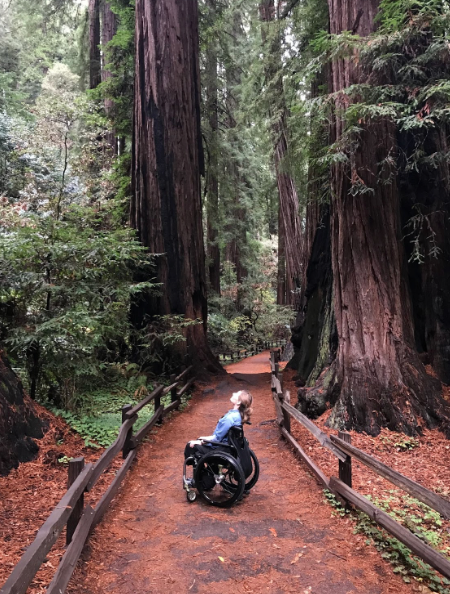Instead of playing on the basketball team, she could audition for the school musical. Instead of skiing while standing up, she could learn to do it while sitting down. This was the attitude of Laura Gean as a young teenager - she was stubbornly independent and did not let Charcot-Marie-Tooth disease hold her back from participating in activities.
When Laura started experiencing high arches in her feet, hammer toes, and multiple ankle sprains at the age of 13, it was quickly assumed that she had CMT; several members of her family, tracing back to her maternal grandmother, had already been diagnosed with the disease.
Laura said, “My initial reaction at 13 was pretty healthy in hindsight. I certainly didn’t like it or want to have CMT, but I didn’t become depressed or act out. Most of the older relatives I knew with CMT had mild symptoms and lived with minimal impact.”
What was different in Laura’s case, though, was the age at which her symptoms began. While she was observed to have nerve disease as a teenager, many of the members of her family hadn’t known that they had CMT for a long period of time, many even when they had children. Laura’s mother, for instance, didn’t experience symptoms until she was around 40 years old.
Over time, Laura’s CMT atrophy progressed from her feet up through her body. While she originally wore only orthotics, custom insoles for her shoes, she later transitioned to using leg braces, crutches, hand controls for driving, and then a wheelchair as an adult. As a young girl, this led to fears of social acceptance for Laura.
However, she was fortunate enough to have “such overwhelmingly loving and supportive family and friends.”
With her friends and family by her side, Laura has overcome her social fears; she is currently 46 years old and very confident in who she is - and who she is includes many different things.
Laura is someone who now struggles to open Snickers candy bars, has messy handwriting, and has a harder time traveling because of difficult-to-navigate terrain and the need for wheelchair-accessible lodging. She is also someone who spends a lot of time reading, painting, drawing, and playing games.
She said, “I like playing games - from quick games like Wordle and Connections; party games like Taboo, Pictionary, or Codenames; to really complicated, nerdy games like Pandemic Legacy.”
Despite all of this, Laura still has anxieties and frustrations related to CMT. In March of 2022, a genetic variant was identified: the variant that causes CMT 1J. A blood test officially diagnosed Laura with CMT 1J, making her one out of approximately 40 people in the entire world with this variant.
Laura said, “After the 1J diagnosis, I’ve found that 1J symptoms can be much more severe than other forms of CMT. I’ve felt nervous (a new feeling for me related to CMT) knowing that other patients with 1J have had problems with breathing and swallowing. As my symptoms affect more activities of daily life, I feel more frustrated than I have at other points in my life.”
Since being diagnosed with this specific type of CMT, Laura has been inspired to become a part of the search for a cure. She has connected with Michelle Moon, a neurologist whose family has also been affected by CMT 1J. Together, the two started this foundation to raise awareness for CMT 1J, provide networks for others with CMT 1J, and raise money for a cure.

